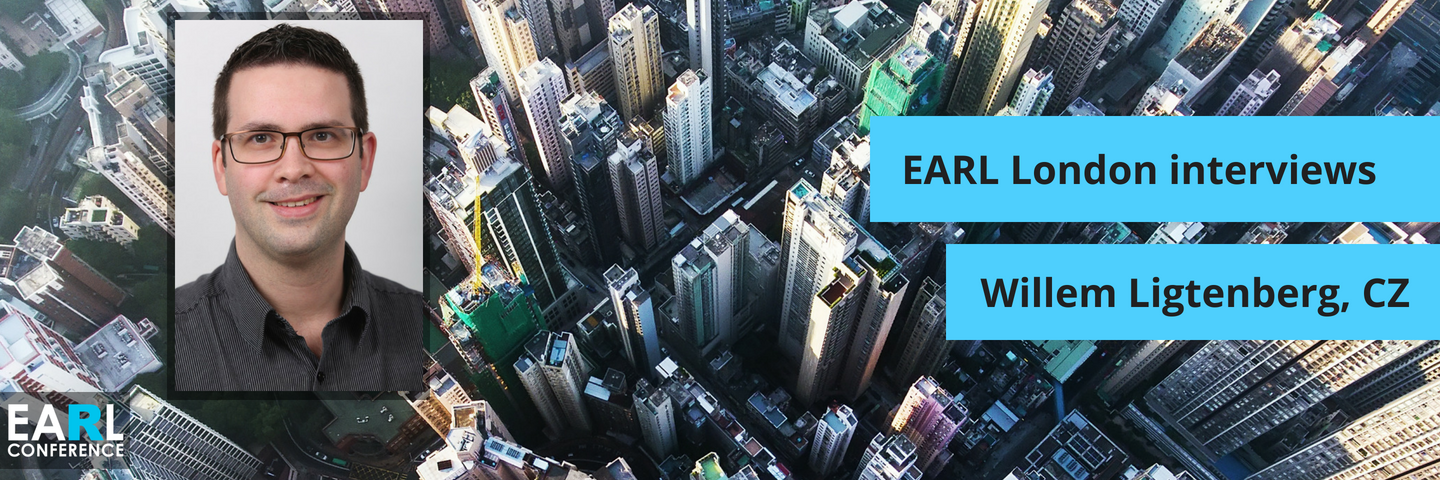
For today’s interview, Ruth Thomson, Practice Lead for Strategic Advice spoke to Willem Ligtenberg, Data Scientist at CZ, a health insurance company in the Netherlands.
Willem is presenting “Developing a Shiny application to predict work load” at EARL London and we got the chance to get a preview of some of the areas he will be covering.
Thanks Willem for taking the time for this interview. What was the business need or opportunity that led to this project?
We are a healthcare insurance company and in one specific department, it often took longer than 3 working days to process a claim.
We knew that if we could process a claim within 3 working days, customer satisfaction would increase, regardless of the outcome.
So, we wanted to improve customer satisfaction by processing claims quickly. However, this department often had a backlog of claims as it was hard to predict how many claims would be received and therefore the number of staff members needed to process those claims.
The processing of these specific claims is difficult to automate as the documents that are submitted are not standardised, an individual is required to review it.
How did you go about solving this problem?
The most important first step was understanding what we wanted to predict. It sounds simple but this detail was important. We realised we didn’t want to predict when a claim would arrive from the post but instead when the claim was ready for the department to process. This difference is very important.
Once we had clarified this important point, we had to prepare the data to ensure it was in the right format. We then tested different predictive models and finally chose Prophet, a forecasting model which is developed by Facebook. Next, we evaluated different models until we were happy with the result. To allow the business to generate their own forecasts we created a Shiny app.
The result of our work has been that claims are now processed by the department within 1 working day and the department is able to maintain optimum staffing levels to process those claims.
What value did your project deliver?
The most important value has been in customer satisfaction. Customer satisfaction increases from a 7.5 to an 8 when claims are processed within 3 days. This may not sound like much but it is a significant increase in this context. As a business, we highly value our customer satisfaction.
There has also been a reduction in the need for employing short-term temporary staff which has reduced costs.
Interestingly, we have also found that, by processing claims within 1 day, productivity has increased. We think that there is something interesting in the psychology behind being able to complete all your work in one day which might lead to people going the extra mile. For me, increased productivity was an unexpected benefit.
What would you say were the elements that made your project a success?
Getting the right data – like many insurance companies, we have a lot of data. The critical thing is choosing the right data to use for this specific use case.
The right model – we spent time finding the right model for the project to get the best result.
The user interface – the Shiny App was the ideal user interface because it allows the user to interact with the results by, for example, changing the date range. We also made sure that the users could export the results for use in the existing planning tools to maximize the value from the results.
What other businesses do you think would benefit from this use case?
Any business which has a need to predict or make forecasts! It will be most of value to help make decisions on staffing levels in bigger teams, say 30+ people and where there is a variability or seasonality, the Prophet model is really good for that.
More EARL interviews
We will be sharing some more EARL interviews with our speakers leading up to 11 September. We look forward to sharing speaker insights and more of what we can all expect September!
Early bird ticket sales will end 31st July – get yours now.

